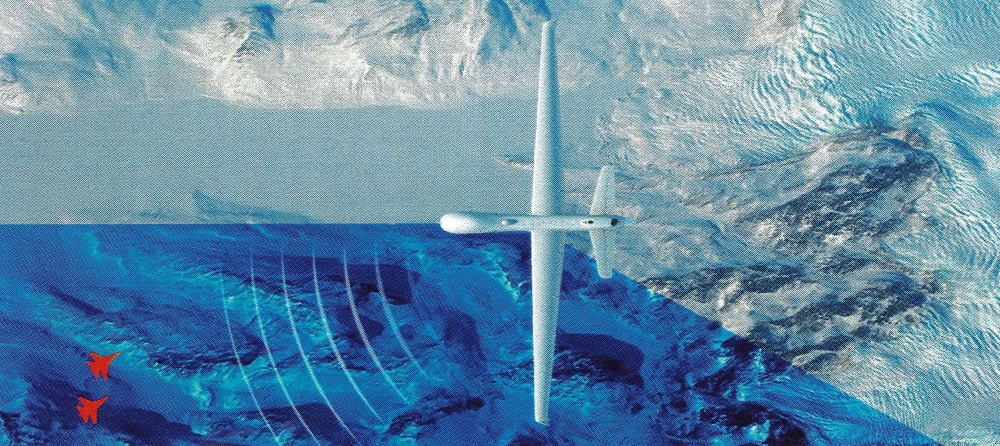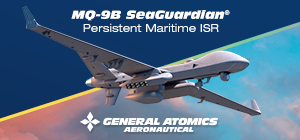
General Atomics Aeronautical Systems (GA-ASI) announced a strategic cooperation with Saab for the development of an Unmanned Airborne Early Warning (UAEW) solution based on its MQ-9B Medium Altitude, Long Endurance uncrewed platform.
Saab brings to the table the experience gathered in years of work on AEW radars for manned aircraft through the ERIEYE radar-mission system line which has culminated, at present, in the GlobalEye solution based on the Bombardier Global 6500 business jet.
The radar is of the AESA type, with transceiver modules made with GaN (gallium nitride) semi-conductors. On the MQ-9B, 2 AESA arrays, one per side, will be accommodated within special pods (developed by GA-ASI) to be carried under the wings, while a third pod, containing the common avionics for the entire AEW system, will be installed on the centreline pylon.
The solution will be used stand-alone or in crewed-uncrewed teaming. GA-ASI has been pushing the idea for some time, notably presenting the concept also to the NATO AEW Force as part of the quest for a capability that can entirely replace the aging and increasingly obsolescent fleet of E-3 SENTRY aircraft.
GA-ASI and Saab’s AEW offering will span a wide range of applications, including early detection and warning; long-range detection and tracking; simultaneous target tracking and flexible combat system integration, all over line-of-sight and SATCOM connectivity.
It must be noted that transmitting the whole mass of target and surveillance data reliably and in real time will probably be more of a challenge than to integrated podded radar arrays on the drone.
Crucially, the podded AEW solution is intended to be entirely compatible with the MQ-9B Short Take Off and Landing (STOL) wing-kit that GA-ASI is testing in the wing tunnel to enable the drone to operate from aircraft carriers without need for catapults and arresting wires.
The Royal Navy is particularly interested in this solution as a replacement for the current CROWSNEST kit carried currently on AW101 MERLIN helicopters. A formal RFI has already been issued, with a sizeable budget notionally over £1 billion in the long term. The Royal Navy hopes to replace CROWSNEST relatively soon (2029 – 2030) and has won significant backing from the recently published Strategic Defence Review in its ambitions to bring uncrewed platforms on the carriers to realize the “first AEW air wing in Europe”.
Indeed, working with Ultra, the Royal Navy is also working on G-size sonobuoys that will be integrated on MQ-9B for the ASW mission as well.
While the UK SDR stops short of mentioning that the RAF MQ-9B PROTECTOR aircraft should be modified with the STOL wing-kit, it backs fitting them with “maritime” surveillance capabilities. Already in 2024, the RAF had publicly said that interest in the STOL wing was high to achieve a “SEA PROTECTOR” capability by around 2028.
The MQ-9B STOL solution could gain the interest of other navies as well: South Korea followed the Royal Navy’s lead in carrying out embarkation trials on its DOKDO class LHD with GA-ASI’s MOJAVE demonstrator aircraft, for example. The Italian navy is also likely to be interested, and GA-ASI will of course be betting on USMC needs as well.
While the effect of the thicker, much larger area wing of the STOL kit on altitude and flight endurance is not yet clear, the MQ-9B in its base form offers very long mission times (into and beyond the 30 hours depending on payload and mission) and is expected to bring radically increased AEW performance and endurance in comparison to helicopter-based solutions.
Follow us on Telegram, Facebook and X.








.png)
